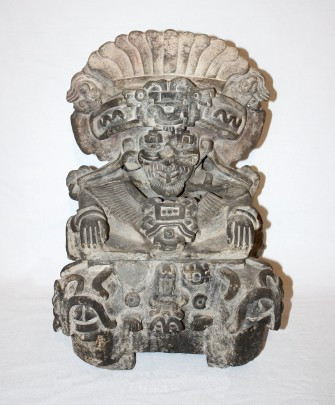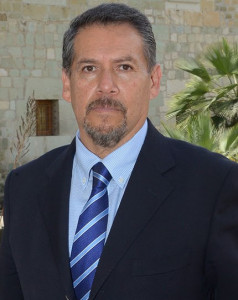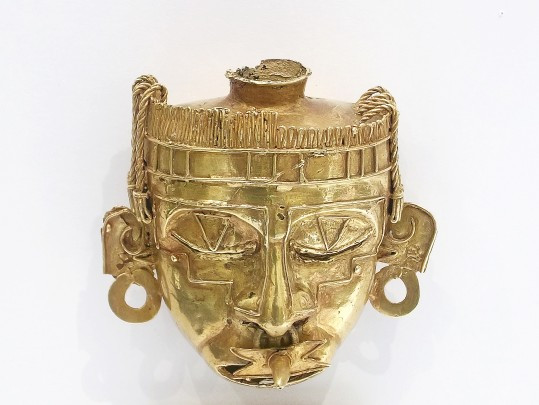The spacious atrium of Santo Domingo leads to the Museum of the Cultures of Oaxaca, first inaugurated almost a quarter of a century ago, and now a key point of reference for Mexican and foreign tourists alike. The permanent and temporary exhibitions display a notable collection of archeological and historical pieces, together with a diverse range of expressions of contemporary art and culture: painting, concerts, lectures, book presentations, symposiums and other events. Together, these bring to life the splendid setting.
The former monastery is a place of serene beauty. The variety of perspectives revealed by different corners of the building reveal the cloister, the novices’ courtyard, the atrium, the solid yet slender towers of the church and the ethno-botanical garden. Groups of students of all levels of education are frequently to be seen taking guided visits, indicating the important educational role the venue plays.
The invaluable archeological collection housed by the museum includes numerous examples of urns representing Cosijo and other deities associated with the Bat god, male and female attendants, serpent gods, gods bearing helmets or masks, urns to Xipe, the Tlacuache god, gods with headdresses, whistles, fragments of stelae, pots, incense burners, stone carvings and many other archeological objects. The highpoint of the museum collection is the set of jewels from Tomb 7 of Monte Albán, discovered by Dr. Alfonso Caso in 1932. These magnificent objects in alabaster, shell, turquoise, jade, coral, obsidian and pearl, the sgraffito jaguar bones and the delicate and beautiful gold filigree continue to astonish with the skill and beauty expressed by the artisans of the Mixtec region in the post-classic period.
“Distributed across vast areas of the states of Puebla, Guerrero and Oaxaca, the Mixtec civilization dates from before the second millennium BC, and after the Conquest it still continued to glimmer through the process of syncretism and coexistence with the dominant culture. Already in the pre-Hispanic period, faced with the Náhuatl hegemony, Mixtec dominions negotiated their political interests with those of Teotihuacán or Tenochititlán.
The trade routes stretched from Aridoamerica, as testified by the blue turquoise in the funeral masks, and reached via land and sea at least as far as Peru and Colombia, whose gold found unique patterns in the Mixtec region, enhanced by the techniques of Andean goldsmiths. A symbol of the unity shared with the rest of the cultures of this continent is the Mesoamerican fret pattern, an ornamental design which ran up the slope and panel stairs on which, we might say, those peoples living far from each other learned to walk in parallel.
Jealous protectors of their mythology, they refused to allow the Aztec god Tlaloc to subjugate their Dzahui, lord of water, whose worship continued until the mid-sixteenth century and who proliferated in countless monuments. Nor did they resign themselves to the worship of the crucifix erasing his memory, but instead adopted Western writing and other means of recording in order to establish their annals. The Mixtec have left behind one of the largest collections of codices in the Americas. Meanwhile, the Spaniards acknowledged this cultural identity and prepared grammars of their language (Art in the Mixtec tongue) and vocabularies of their expressions, which today are sought after by linguists to enrich the historical grammars of Amerindian languages.
The Mixtec created their own world, which is the best definition of “society,” and as always the merely utilitarian stratum was surpassed by the symbolic world: when we observe a Mixtec funerary urn, a tripod pot or an incense burner, we see not only works of art in the usual sense of something without use but of aesthetic value. To the contrary, this society—like many—did not distinguish between one and the other. Thus, a conch that served as a trumpet to announce rituals and battles is copiously engraved with a discourse relevant to the occasion. The utensil has at once a practical use and a religious connotation. Likewise, the anthropomorphic representation of their pots is only partial: while it shows the Mixtec vision of the human world, the lack of proportion in the members and the body suggests an image that is also mythical and atavistic. They do not show the Mixtec people as they were, but a representation.” [1]
Much more could be said about Mixtec and Zapotec cultures and about the archeological collection of the museum, as well as on the collection covering the colonial period and of independent Mexico with a valuable and heterogeneous collection that includes canvases, maps, oil paintings, metalwork, arms and armor, mural fragments, estofado carvings in wood, furniture from the period of the Juárez republic and the Porfiriato, objects from revolutionary and contemporary Mexico and a number of ethnographic items that suggest the ethnocultural wealth of Oaxaca.
[1] Noria, David. Algo más sobre la cultura Mixteca
Caso, Alfonso, El tesoro de Monte Albán, México, INAH, 1969.
LEGAL NOTICE
The contents of this website belong to the Instituto Nacional de Antropología e Historia de México, and may be downloaded and shared without alterations, provided that the author is acknowledged and if is not for commercial purposes.








